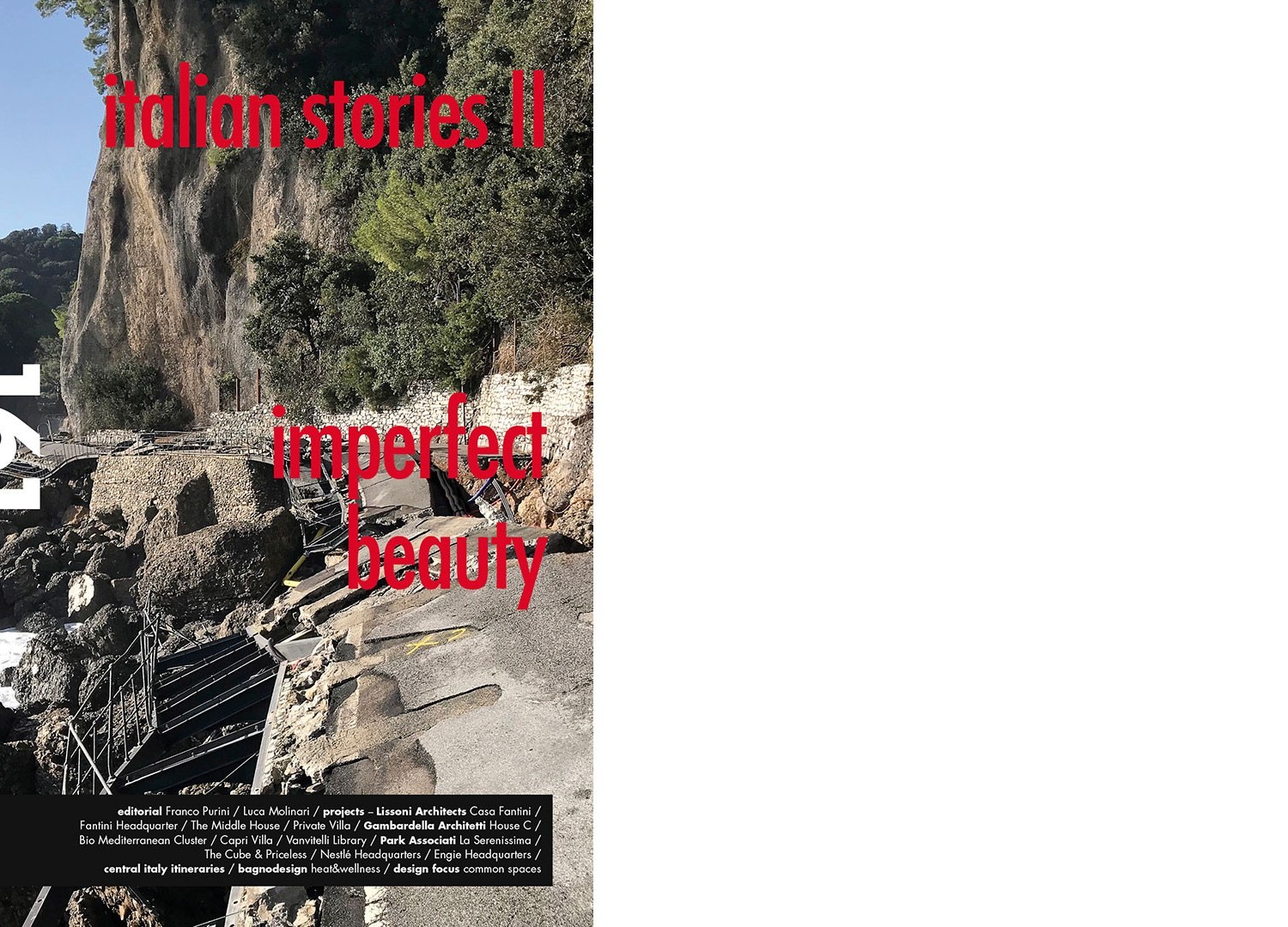
International magazine of architecture and project design november/december 2018
Past, present and future in Italian architecture
Through a journey made up of pauses and fresh starts the magazine continues its narration on contemporary Italian architecture which, overcoming the impasse of the lack of systematicity, moves by juxtaposing different paths in perennial suspension between critical reflections and constructed examples. The protagonists and the contributions do not therefore have any hierarchical intent, nor do they reveal any claim to identify a univocal and overall vision, if anything, on the contrary – as Luca Molinari clearly describes in his essay Italia per frammenti. Un viaggio tra nostalgia, fragilità e la ricerca di una bellezza imperfetta – highlights how contemporary production is nothing more than the inevitable reflection of an oxymoron that feeds on the dialectic of opposites, being its cause and reason. We are a country of long cultural tradition and at the same time a young nation made of bell towers and parochialism. We share a territory made of stones and with a solid masonry tradition behind it, that turns out to be sadly fragile and we could continue to draw from such diversity and complexity the reasons for a cautious and sincere optimism. We are in my opinion, not by merit, but by necessity, among the most prepared, or better tempered, compared to a contemporary condition that everything overlaps and confuses according to a contrast between localisms and a global circulation of ideas able to disorient and disassemble each peremptory and absolute position.Still without merit perhaps, but certainly by right of belonging, we maintain over time the clear awareness of an evolutionary chain of architectural thought that shifts from classicism to renaissance and from this, at the time, highly modern and innovative but able to recover the value of antiquity, the propensity to interpret the past, present and future condensed into a single compositional action.This talent, quite natural in some protagonists of the Italian scenario, is underlined by Franco Purini, through the known critical fineness of his writings, in the image of Giuseppe Terragni and his most awaited project: the Danteum. If we add to these well-known criticisms the elegance of the examples built by Lissoni and Park Associati, or the Mediterranean creativity of Gambardella, limiting ourselves to mentioning the protagonists of this issue of Area, perhaps Italian architecture as a whole could be less confused and contradictory.
Marco Casamonti
Download cover
Download table of contents
Download introduction of Marco Casamonti


